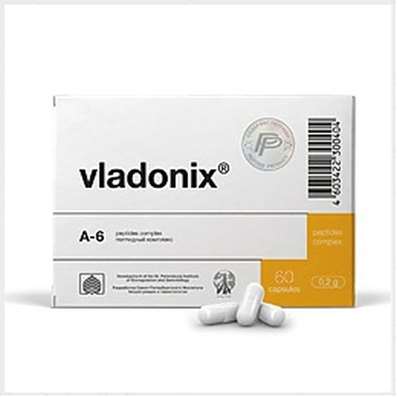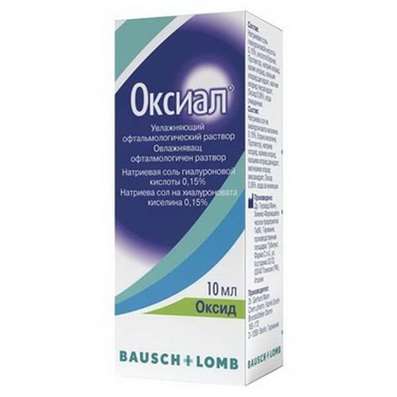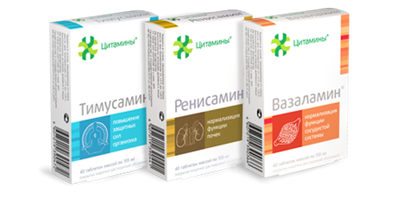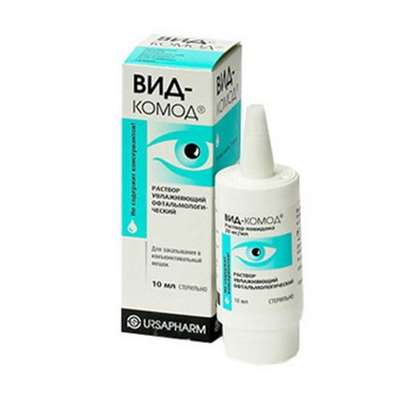Instruction for use: Mezavant
I want this, give me price
Active substance Mesalazine
ATX Code A07EC02 Mesalazine
Pharmacological group
Antimicrobial and anti-inflammatory intestinal [NSAIDs - Salicylic acid derivatives]
Nosological classification (ICD-10)
K51 Ulcerative colitis
Colitis acute ulcerative, Colitis ulcerative, Ulcerative-necrotic colitis, Colitis ulcerative-hemorrhagic nonspecific, Colitis ulcerative and trophic, Colitis ulcerative idiopathic, Colitis ulcerative nonspecific, Nonspecific ulcerative colitis, Proctocolitis ulcers, Hemorrhagic purulent rectoxitis, Rectoccolitis ulcerative-hemorrhagic
Composition
Tablets of prolonged action, covered with enteric-coated shell 1 tab.
active substance:
mesalazine 1200 mg
Excipients
nucleus: sodium carmellose (7MF) - 11.3 mg; sodium carmellose (7HXF) 38.7 mg; carnauba wax - 5 mg; Stearic acid - 10 mg; silicon dioxide colloidal - 2 mg; sodium carboxymethyl starch (type A) - 30 mg; talc - 11 mg; magnesium stearate - 14 mg
shell: talcum - 17.8 mg; methacrylic acid and methyl methacrylate copolymer [1: 1] - 16 mg; methacrylic acid and methyl methacrylate copolymer [1: 2] - 16 mg; triethyl citrate 3.2 mg; titanium dioxide - 6 mg; ferric oxide red oxide - 3 mg; macrogol 6000 - 1 mg
Description of dosage form
Oblong biconvex tablets, covered with a shell of red-brown color. On one side there is an engraving "S476". On the cross section, the core of the tablet is from white to almost white.
pharmachologic effect
Pharmacological action - anti-inflammatory local.
Pharmacodynamics
Mechanism of action
Mesalazine is a derivative of 5-aminosalicylic acid. The mechanism of action of mesalazine to the end has not been studied, but it has been found that the drug has a local anti-inflammatory effect on the intestinal epithelium. In patients with chronic inflammatory bowel disease in the mucosa, the synthesis of arachidonic acid metabolites by cyclooxygenase and lipoxygenase pathways is enhanced. It is possible that mesalazine reduces inflammation by inhibiting COX (cyclooxygenase) and suppressing the synthesis of PG in the large intestine. Mesalazine has the ability to inhibit the activation of the κ---NFκB nuclear factor and, consequently, the production of key pro-inflammatory cytokines. Recently, it has been suggested that deficiency of nuclear receptors PPAR-γ (γ-form of receptors activated by peroxisome proliferator) may be associated with the development of ulcerative colitis. The efficacy of PPAR-γ receptor agonists in ulcerative colitis was demonstrated. Accumulated evidence indicates that the effect of mesalazine can be realized by affecting the receptors of PPAR-γ.
Pharmacokinetics
The tablet of the preparation Mesavant has a nucleus containing mesalazine (5-aminosalicylic acid, 5-ASA) in a multicomponent matrix. The core is surrounded by a shell of copolymers of methacrylic acid of types A and B; The membrane is designed so that the release of mesalazine begins only when the pH is above 7.
The mechanism of action of mesalazine is not fully understood, but it is believed that mesalazine (5-ASA) has a local effect, so the clinical effect of the drug does not correlate with the pharmacokinetic characteristics of the substance. The main way to excrete mesalazine is metabolism to N-acetyl-5-aminosalicylic acid, which is pharmacologically inactive.
Suction
Investigations with γ-scintigraphy showed that after a single dose of healthy volunteers on an empty stomach drug at a dose of 1.2 g, mesalazine quickly and unchanged passes through the upper gastrointestinal tract (gastrointestinal tract). At the same time, traces of 14C-labeled mesalazine are revealed throughout the colon, which indicates the presence of mesalazine in these parts of the gastrointestinal tract. The complete disintegration of the Mezavant tablet and the release of mesalazine was observed after approximately 17.4 hours.
After a single dose of healthy volunteers at a dose of 2.4 or 4.8 g for 14 days, the absorption of mesalazine was 21-22% of the dose.
After a single dose of the drug by healthy volunteers on an empty stomach at a dose of 1.2; 2,4 and 4,8 g the concentration of mesalazine in plasma was determined 2 hours after administration and reached a maximum value after 9-12 hours. Pharmacokinetic parameters showed wide variability. The level of system exposure of mesalazine - AUC - when taking the drug in the range from 1.2 to 4.8 g was proportional to the dose taken. Cmax of mesalazine in plasma at a dosage range of 1.2 to 2.4 g increased approximately in direct proportion, whereas 2.4 to 4.8 g increased less than the dose increase.
In the study of single and multiple administration of the drug at a dose of 2.4 and 4.8 g with regular food, mesalazine was detected in the blood plasma after 4 hours, reaching Cmax 8 hours after a single dose.
A single dose of Mezavant in a dose of 4.8 g with fatty food was accompanied by a slowing down of the absorption phase. Under these conditions, mesalazine was detected in the blood plasma approximately 6 hours after administration. However, foods rich in fats raised the systemic exposure of mesalazine (mean Cmax by 91%, mean AUC by 16%) compared with fasting rates.
Distribution
It is believed that the drug Mezavant has a similar distribution profile, as other mesalazine-containing drugs. Mesalazine has a relatively small Vd of about 18 liters, indicating a minimal systemic distribution. When the concentration of mesalazine in the blood plasma to 2.5 μg / ml and the concentration of N-acetyl-5-aminosalicylate to 10 μg / ml, the substances were bound to blood plasma proteins by 43 and 78-83%, respectively.
Metabolism
The only important metabolite of mesalazine is the pharmacologically inactive N-acetyl-5-aminosalicylic acid. It is formed by the action of N-acetyltransferase-1 in the cells of the liver and cytosol cells of the intestinal mucosa.
Excretion
The absorbed mesalazine is excreted mainly by the kidneys after acetylation to N-acetyl-5-aminosalicylic acid. Nevertheless, the drug in small amounts is excreted by the kidneys and unchanged. Of 21-22% of the absorbed dose of the drug, less than 8% of mesalazine is excreted unchanged in the urine for 24 hours. About 13% is excreted for 4 hours as N-acetyl-5-aminosalicylic acid. Visible T1 / 2 mesalazine and its main metabolite after taking the drug at a dose of 2.4 and 4.8 g were an average of 7-9 and 8-13 hours, respectively.
Special categories of patients
Data on the use of Mezavant in patients with impaired liver function. After a single dose of Mesavant in a dose of 4.8 g, the systemic exposure of mesalazine in elderly patients (over 65 years of age, the average creatinine clearance of 68-76 ml / min) was superior to that in younger patients (18-35 years, average creatinine clearance 124 ml / min) up to 2 times. The level of systemic exposure is inversely proportional to the function of the kidneys, estimated by the creatinine clearance. This should be taken into account in the treatment of elderly patients with Mezavant.
In patients with impaired renal function, a decrease in the rate of excretion and an increase in the concentration of mesalazine in the blood plasma may occur, which may be accompanied by an increased risk of unwanted adverse reactions from the urinary system.
In women, AUC of mesalazine was 2 times greater than that of men.
Based on a limited amount of pharmacokinetic data, the pharmacokinetics of 5-ASA and N-acetyl-5-ASA in persons of the South European and Hispanic group are considered the same.
Indications
induction of remission by clinical and endoscopic parameters in patients with mild to moderate ulcerative colitis;
maintenance of remission in patients with ulcerative colitis.
Contraindications
hypersensitivity to salicylates (including mesalazine) or any auxiliary component of the drug;
severe impairment of kidney function (GFR <30 mL / min / 1.73 m2);
severe impairment of liver function;
children under 18 years of age (due to lack of data on the safety and efficacy of the drug in this category of patients);
With caution: mild or moderate renal impairment; chronic pulmonary dysfunction (bronchial asthma); diseases predisposing to the development of myo- or pericarditis; patients who are allergic to sulfasalazine (due to possible cross-over hypersensitivity to mesalazine).
pregnancy and lactation
Limited data on the use of mesalazine during pregnancy do not indicate an increased risk of congenital malformations. Mesalazine penetrates the placental barrier, but the concentration of the substance in the fetal tissues is much lower than when applied in therapeutic doses in adults. Animal studies did not reveal the adverse effects of mesalazine on the course of pregnancy, embryo / fetal development, childbirth, and postnatal development of offspring. Mesalazine should be used during pregnancy only if the possible benefit to the mother exceeds the potential risk to the fetus. Care should be taken when administering high doses of the drug.
Mesalazine is excreted in breast milk in small amounts, and the metabolite N-acetyl-5-aminosalicylic acid - in a higher concentration. During lactation, mesalazine should be used with caution and only if the possible benefit to the mother exceeds the potential risk to the child. In infants, cases of sporadic diarrhea have been described.
Ability to conceive. The available data do not indicate a prolonged effect of mesalazine on the ability of men to conceive.
Side effects
The most common adverse events in clinical trials were headache, abdominal pain, and nausea. For none of the undesirable side reactions, the frequency did not exceed 10%. When using Mezavant, other adverse reactions were observed less often.
Unwanted reactions to the Mezavant preparation, as well as undesirable reactions arising from the administration of other mesalazine-containing drugs, are systematized relative to each of the organ systems using the following frequency classification: very often (≥1/10); often (≥1 / 100, <1/10); infrequently (≥1 / 1000, <1/100); rarely (≥1 / 10000, <1/1000); very rarely (<1/10000), including isolated cases.
From the blood and lymphatic system: infrequently - thrombocytopenia; frequency unknown - agranulocytosis, aplastic anemia, leukopenia, neutropenia, pancytopenia.
From the side of the central nervous system: often - a headache; infrequently - dizziness, drowsiness, tremor; frequency unknown - neuropathy.
From the CCC: often - increased blood pressure; infrequently - tachycardia, hypotension; frequency unknown - myocarditis, pericarditis.
On the part of the respiratory system: infrequently - pain in the pharynx / larynx; frequency unknown - bronchospasm.
From the gastrointestinal tract: often - bloating, abdominal pain, diarrhea, dyspepsia, vomiting, flatulence, nausea, deviation of indicators of functional liver samples (AST, ALT, bilirubin); infrequently - colitis, pancreatitis, polyp of the rectum; frequency unknown - hepatitis, cholelithiasis.
From the skin and subcutaneous tissues: often - itching, rash; infrequently - acne, alopecia.
From the immune system: infrequently - hives; frequency unknown - allergic pneumonitis (including interstitial pneumonitis, allergic alveolitis, eosinophilic pneumonitis), angioedema, a syndrome similar to systemic lupus erythematosus.
From the osteomuscular system, connective and bone tissue: often - arthralgia, muscle pain, back pain.
On the part of the genitourinary system: the frequency is unknown - interstitial nephritis.
General condition: often - asthenia, fever; infrequently - swelling of the face, weakness.
Interaction
Clinical studies in adult healthy patients did not reveal clinically significant interactions of Mezavant with the 4 most commonly used antimicrobials (amoxicillin, ciprofloxacin, metronidazole and sulfamethoxazole).
Nevertheless, there are data on the interaction of other mesalazine-containing drugs with drugs:
- It is recommended to use caesely with mesalazine simultaneously with drugs that have a nephrotoxic effect, incl. with NSAIDs and azathioprine; this may increase the risk of developing adverse effects from the kidneys;
- mesalazine inhibits the activity of thiopurin methyltransferase. It is recommended to take caution with mesalazine simultaneously with azathioprine or mercaptopurine, because this may increase the risk of a disorder in the cellular composition of the blood;
- the use of mesalazine together with anticoagulants of the coumarin group, for example warfarin, may be accompanied by a decrease in the activity of the latter. If this combination is necessary, the MI should be carefully monitored.
Dosing and Administration
Inside, 1 time per day with meals. Tablets can not be crushed or chewed and should be swallowed whole.
Adults, including the elderly (over 65)
Induction of remission: 2.4-4.8 g (2-4 tablets) once a day. For patients not sensitive to the minimum dose, the recommended maximum daily dose is 4.8 g. When taking the maximum dose (4.8 g / day), the effect of treatment should be evaluated after 8 weeks.
Maintenance of remission: 2.4 g (2 tablets) 1 time per day.
Children and teenagers under 18 years of age
Due to the lack of safety and efficacy data, Mezavant is not recommended for use in children younger than 18 years of age.
Special studies of the use of Mezavant in patients with impaired liver or kidney function were not performed.
Overdose
Symptoms: Mezavant is an aminosalicylate; signs of an overdose of salicylates include tinnitus, vertigo, headache, confusion, drowsiness, pulmonary edema, dehydration amid sweating, diarrhea and vomiting, hypoglycemia, hyperventilation, electrolyte imbalance and blood pH, hyperthermia.
Treatment: with acute overdose of salicylates, standard methods of treatment should be used. Hypoglycemia and disturbance of the water-electrolyte balance should be adjusted by appropriate therapy. Adequate renal function should be maintained.
special instructions
When medications containing mesalazine or its precursors are used, cases of renal dysfunction are described, including minimal nephropathy and acute / chronic interstitial nephritis. Mezavant should be used with caution in patients with confirmed mild or moderate renal impairment. All patients are recommended to undergo a study of kidney function before treatment and at least 2 times a year during treatment.
Patients with chronic pulmonary dysfunction (asthma) have an increased risk of developing hypersensitivity reactions, and should be under constant supervision of medical personnel.
After receiving mesalazine, in rare cases, a serious disruption of the cellular composition of the blood developed. When a patient has unexplained bleeding, bruising, purpura, anemia, fever, or sore throat, a blood test should be performed. If there is a suspicion of a disorder in the cellular composition of the blood, treatment should be discontinued.
When using the drug Mezavant or other medications containing mesalazine, rare cases of hypersensitivity reactions from the heart (myo- and pericarditis) are described. It should be cautious to prescribe this drug to patients with diseases predisposing to the development of myo- or pericarditis. If hypersensitivity reaction is suspected, repeated use of medications containing mesalazine is unacceptable.
The use of mesalazine is associated with the development of an acute intolerance syndrome, which in some cases is difficult to distinguish from an exacerbation of inflammatory bowel disease. Although the frequency of this phenomenon is not accurately established, it was 3% in controlled clinical trials of mesalazine or sulfasalazine. Symptoms include intestinal cramps, acute pain in the abdomen, diarrhea with an admixture of blood, sometimes a fever, a headache and a rash. If suspected of developing an acute intolerance syndrome, drugs containing mesalazine should be immediately discontinued and their reuse should be ruled out.
There have been reports of an increase in hepatic transaminase activity in patients taking medications containing mesalazine. It is recommended to be cautious when administering Mezavant to patients with impaired liver function.
Caution should be exercised in treating patients who are allergic to sulfasalazine, because of possible cross-sensitivity to mesalazine.
Organic or functional obstruction of the upper gastrointestinal tract can slow the development of the effect of the drug.
If renal dysfunction during the treatment of patients with the drug Mesavant should take into account mesalazine-induced nephrotoxicity.
The use of mesalazine can lead to false-positive test results in the measurement of normometine in urine using liquid chromatography with electrochemical detection due to the similarity of the chromatograms of normetanephrine and the main metabolite of mesalazine-N-acetylaminosalicylic acid. Therefore, to determine the content of normetanephrine in urine, an alternative selective method should be used.
Influence on the ability to drive and other mechanical means. Studies of the effect of Mezavant on the ability to drive and move vehicles have not been carried out. It is believed that the drug Mezavant does not affect this ability.
Form of issue
Tablets of prolonged action, covered with enteric-coated shell, 1.2 g. in a blister of polyamide / aluminum / PVC, covered with aluminum foil. For 5 blisters in a pack of cardboard.
Conditions of leave from pharmacies
On prescription.
storage Conditions
At a temperature of no higher than 25 ° C. Keep in original packaging to protect from moisture.
Keep out of the reach of children.
Shelf life
2 years.
Do not use after the expiry date printed on the package.

 Cart
Cart





